Do you use YouTube in your marketing? Wondering how often you should publish videos and what type of content works on YouTube?
To explore the YouTube trends marketers need to know about, I interview Sean Cannell on the Social Media Marketing Podcast.
Sean is a video marketing expert, host of the Think Marketing Podcast, and author of YouTube Secrets. His two YouTube channels have a combined audience of 1.5 million subscribers.
Sean explains the importance of quality over quantity and branding over marketing. He also shares helpful insights into the YouTube algorithm.
Listen to the Podcast Now
This article is sourced from the Social Media Marketing Podcast, a top marketing podcast. Listen or subscribe below.
Where to subscribe: Apple Podcasts | Spotify | YouTube Music | YouTube | Amazon Music | RSS
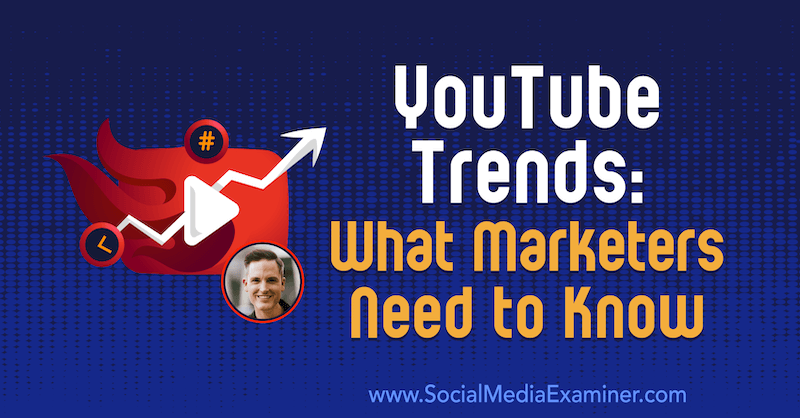
Why Marketers Should Consider YouTube
YouTube is sometimes not even part of the social media conversation; it's just known as a video platform. But it is a social network. It's also the number-one video platform, second–most-visited website, and second-largest search engine in the world.
Marketers should consider it simply because their target audience is definitely there. YouTube has over 2 billion monthly active users and their consumption is going up all the time on mobile, desktop, and even smart TVs. People are viewing content for longer, which is YouTube's goal: to increase time on the platform so they can sell advertising to build business.
Younger generations like Gen Z and Millennials are almost entirely on YouTube. But it's estimated that 50% of the older generations are also on the platform. Google released a stat that 68% of people—all people, all demographics—use YouTube to answer questions. Maybe they just want to fix their dishwasher, figure out what blender to buy, or are interested in consuming content of all types.
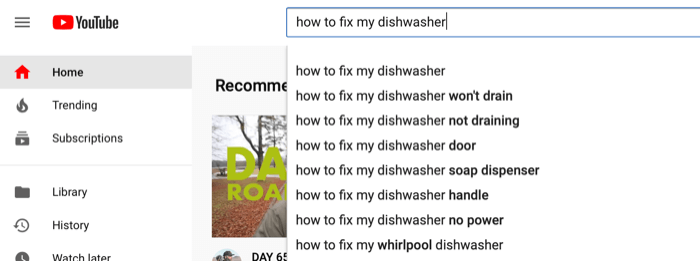
Brian Tracy, somebody a little bit older who's in the personal development space, has built a really strong YouTube presence. People from traditional media are developing their YouTube presence as well; to visualize this, late-night comedy shows have clips on YouTube. So all of the different generations are using it for different reasons. It's such a prominent platform that we all need to pay attention.
Consumption is there and intention is there. Sean goes so far as to say it's irresponsible for any marketer today not to have a YouTube strategy. He lays out three different levels here.
First, Sean believes that everyone should, at the very least, have some degree of established presence with some core pieces of content. Then you can be found there and have some relevance since it's such a dominant platform.
Get World-Class Marketing Training — All Year Long!
Are you facing doubt, uncertainty, or overwhelm? The Social Media Marketing Society can help.
Each month, you’ll receive training from trusted marketing experts, covering everything from AI to organic social marketing. When you join, you’ll also get immediate access to:
- A library of 100+ marketing trainings
- A community of like-minded marketers
- Monthly online community meetups
- Relevant news and trends updates
Second, even if you don't have much of an organic strategy on YouTube, Sean says it's worth looking into YouTube ads. Ad prices are rising everywhere, but with Facebook ads getting disapproved for some marketers, it's worth looking into the paid advertising opportunities YouTube offers.
And on the third level, Sean recommends a strategy whereby you view your brand as more of a media company and focus on putting out consistent, high-quality content on your YouTube channel.
Going into 2020 and beyond, Sean sees six big trends on YouTube.
Emphasizing Quality Over Quantity
YouTube is different from the other social media platforms or content feeds. Content on other platforms is here today, gone tomorrow. Not many people watch a Facebook video from 2 weeks earlier, let alone 2 months or 2 years earlier. But YouTube isn't a content feed, it's a content library, which makes it so powerful.
YouTube isn't about quick tweets and quick Instagram captions. If you put out something more substantial and higher quality, it then has the opportunity to rank in search and be viewed for weeks, months, and years to come. The quality over quantity strategy means creating evergreen content that you put energy into, not just for the first few days of views but so it can be watched years later.
Sean has built his YouTube empire by assembling a library of ranked videos that are consistently being discovered in search and suggested by YouTube, which matters more than ever before.
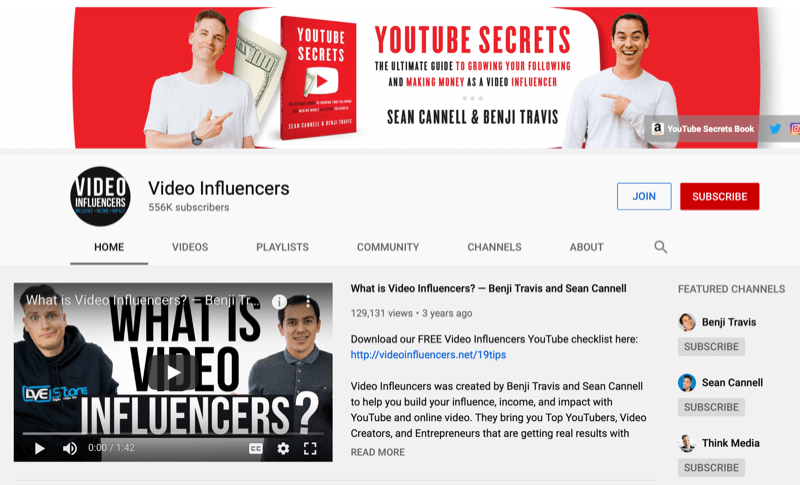
Many people upload videos to YouTube daily and still struggle to gain the traction or the views they want. Sean's advice is to reduce the number of uploads into one or two higher-quality videos: better thumbnails, better-quality content, more optimized, better researched, and with more strategy behind them. Because YouTube is a search engine, really good videos rise to the top and have the opportunity to stay there for years.
Focusing on Branding Over Marketing
As marketers, we're used to doing paid ad campaigns where we just want to get some clicks, drive people to a landing page, or grow our email address list. Maybe we want to do a sales promotion and try to get as many clicks and as much traffic as we can quickly. It's here today and gone tomorrow.
But when you do that, you have to hop from trend to trend, from marketing campaign to marketing campaign. Whereas a business like Nike, which has really built a brand, doesn't ultimately get you to buy their clothes because of their great Facebook ads strategy. They get you to buy their clothes because of the brand equity and trust they've built over decades.
Branding actually builds on quality. It builds on the experience that somebody has with us, as opposed to quickly jumping on a trend and rushing to put out content. In this case, we don't always think through the experience that someone is having with us.
When you build a brand over time, you want to be known as the go-to expert. You want it to be known that in your area of expertise, or in your area of how you serve people, whenever people show up; you'll deliver on your brand promise, your value proposition. As things get more crowded on YouTube—and on all platforms—becoming a recognizable brand can also help you beat the algorithm. One of the reasons why people click on your videos is you're more recognizable; not because of how you look, but because of the way people have known you for delivering.
Don't just create videos for direct selling; create content that represents your brand. As marketers, we always want to quantify everything. If we put out a great YouTube video, we want to deliver value for a few minutes. But as the video ends, we say, “If you want to go deeper, go download my free checklist, or go install this free app or this free coupon or plugin, or go watch a webinar.” This now sends people into a sales process or a sales sequence.
However, in 2020, you want to do that a lot less—maybe only one out of 10 videos should send people off-platform. That goes back to why YouTube is going to suggest your videos: by adding to their overall time on platform, you're adding value. Hold off on the sales conversation and develop know, like, and trust on YouTube longer. Of course, eventually you need to send people to your website but if they're really interested, they'll seek you out.
Be patient. Slow down. Build trust and build your brand over time, and be less focused on short-term marketing metrics.
Seeding
Robert Cialdini, author of Influence, also wrote a book called Pre-Suasion. It talks about how there are many things we can do in our marketing conversations that make the ultimate sales process friction-free because of what has already happened. That's because you've built know, like, and trust.
You need to shift your attention to adding value for people with multiple videos, over multiple minutes and hours, and building that trust. This way, when people enter the sales process, going to the next level with you is a no-brainer.
Remember that we're often talking about a multi-platform conversation. As marketers, we've all heard the Law of Seven: If you're going to buy some toothpaste, you need to hear the jingle at least seven times before you choose to buy that brand. If you're going to make that investment or go with this brand over that brand, you need to have seen the billboard, read the newspaper ad, and visited the website at least seven times.
Those days are long gone. Google recently revealed that there are now 21–24 touchpoints required to generate a viable sales lead.
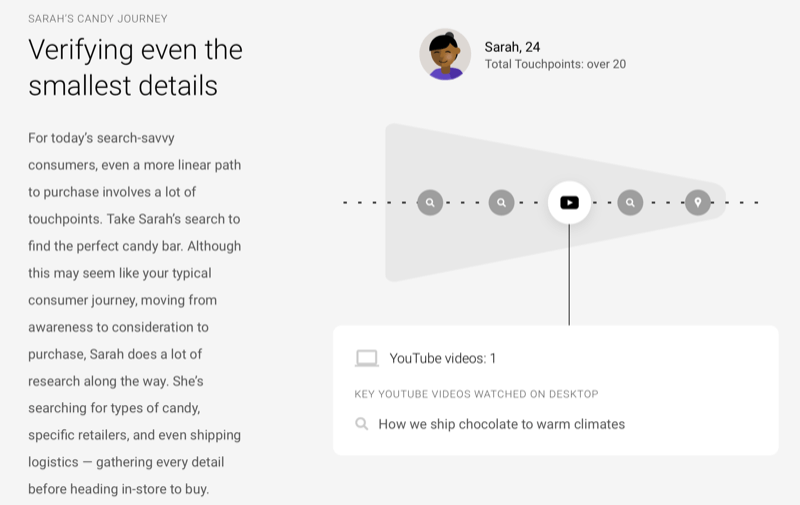
Curiosity Marketing
In 2020 and beyond, you don't have to be so overt with marketing. In fact, if you're pounding a message down people's throats, it's fatiguing. Instead of listing your product—if it's makeup, for instance, saying the name, URL, exact color, and other details—just show off how good it looks and mention that you ‘love this new eyeshadow', etc. This is curiosity marketing.
People who are interested will then ask you what it is and the conversation is now happening in the DMs. You can share a link with them directly, or an affiliate link, because they're actually asking you. So you're creating interest by putting out valuable content.
This goes back to that idea of being patient as a marketer and thinking about how you can consistently build goodwill and add value.
Phillip DeFranco is pretty overt with his commercial spots, but because he's built a show that adds value to his viewers' lives and people want to watch consistently, he has permission to seed all kinds of things. Even when he talks about something else such as another show, he's doing something smart. He talks about it multiple times. He's not overly pushy about it. He's just dropping it consistently.
When you remember that 21–24 (if not more) touchpoints are required, you also realize how important it is to have a longer-game strategy of adding value consistently while keeping your brand in front of people. By keeping that opportunity in front of people, you're investing in a bank account, trust account, and just a pure awareness account.
Once people have heard about something enough times, it starts to stick with them. Then that sales conversation that you want to happen later doesn't have nearly as much friction. It won't be as much of a challenge.
Developing a Clear Value Proposition
We've all heard that it's important to niche down. Matt Gielan from Little Monster Media Co. has done massive studies of the YouTube algorithm and of what videos are being recommended. He's got a great YouTube channel with some deeper studies on cracking the YouTube algorithm. One of the trends Matt has noticed is that YouTube channels with a singular value proposition perform much better.
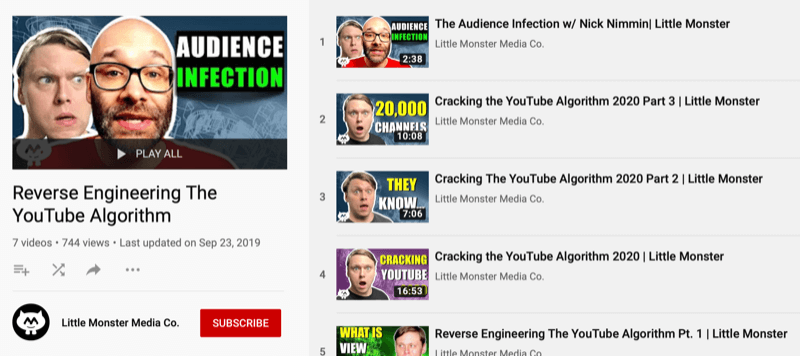
Let's summarize it this way: Never upload a video that your subscribers didn't subscribe to.
If you're building a personal brand, you can have a little more variety in your channel because you are the value proposition. So subscribers want to hear you talk about your fitness routine and how you're making your smoothie in the morning, and they want to hear you interview your friend about life. But where most channels really thrive, especially channels that have grown in the last year or so, is in narrow-focus areas.
On Sean's Think Media channel, he delivers the best tips and tools for building your influence with online video. That's the promise to subscribers: He'll tell you the tools, cameras, software, live-streaming gear, lenses, or lighting kits they should buy, and so on. He then started to stretch the types of tips he was offering—not just camera tips but also strategies, including some influencer marketing stuff.
Sean soon learned that the people who subscribed for the tech were often not interested in those other topics. It became clear to Sean that he needed to start a second YouTube channel. He launched his Think Marketing channel as a place to talk about those marketing strategies that were way off-brand for Think Media.
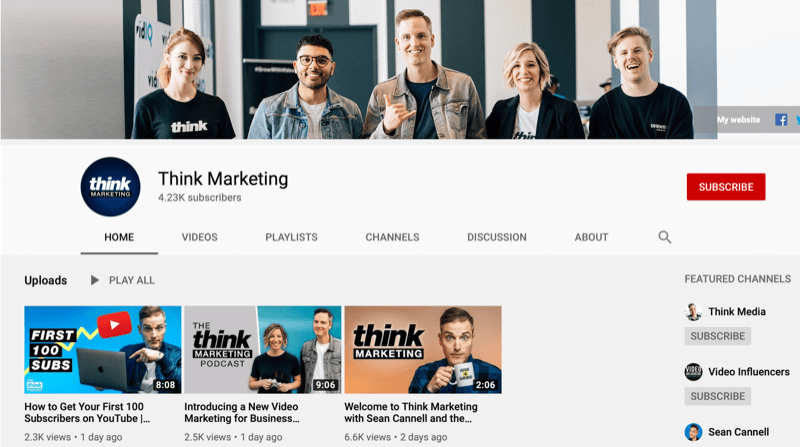
This doesn't mean that you should never experiment with something new on your channel or get stuck in a rut. The key is simply to have a focused value proposition. You can break those rules but you need to know the YouTube commandments to keep the YouTube gods happy.
The way distribution works is that YouTube drips your videos to only some of your subscribers first, then to more of your subscribers, then to non-subscribers whom YouTube has identified as having similar viewing behavior to your subscribers. That's how distribution grows. If you're confusing the algorithm by not interesting your subscribers with the next upload, your overall views will suffer.
It's best to have a clear value proposition and consistently deliver on that. You want to become a no-miss show, no-miss channel, no-miss upload.
The Phillip DeFranco Show is a great example of this. Sean watches Phillip 4 days a week and never wants to miss one of his videos. Phillip recently launched a couple of other channels including a video podcast. He also has a personal channel where he's experimenting with other things.
Phillip could have uploaded all of those things on his main channel and some people would have been all right with it, but he understands that it would have confused the algorithm. It wasn't what his subscribers originally subscribed for. So he's segmented his content so that each channel can have a more focused value proposition.
Keeping People on YouTube
Keeping users on the platform is what all platforms want: Facebook wants you to stay on Facebook, Instagram wants you to stay on Instagram, and YouTube wants you to stay on YouTube. They're not going to penalize you for sending people off-platform. They give you the tools to link your website to your YouTube channel and you can use clickable end cards to send people off. But the algorithm sees session starts and session ends.

Discover Proven Marketing Strategies and Tips
Want to go even deeper with your marketing? Check out the Social Media Marketing Podcast! Publishing weekly since 2012, the Social Media Marketing Podcast helps you navigate the constantly changing marketing jungle, with expert interviews from marketing pros.
But don’t let the name fool you. This show is about a lot more than just social media marketing. With over 600 episodes and millions of downloads each year, this show has been a trusted source for marketers for well over a decade.
If you have an email list that sends traffic to your weekly YouTube upload or you have social media influence on Twitter and send traffic to YouTube that way, YouTube notices that you've initiated a session, and they love you for it. You brought people to the platform, and the longer they stay, the more you're rewarded.
It's actually not just the viewing session on your channel, but the total session time period that you initiate. If they watch other content, a portion of that is attributed back to whoever started the session. The opposite is also true: If you consistently end the session by calling people to go to your website or sending people off the platform, you'll suffer with the YouTube algorithm.
One strategy for keeping people on-platform is to link to other videos. You're keeping the conversation going longer on YouTube to extend that time on platform. As counterintuitive as this might seem, would you rather get 100 people off of YouTube to your email list, or grow your YouTube channel to 10,000, 50,000, 100,000, so now you can get thousands of people to your email list over the next couple months and even years? It's a long-game approach.
Every social platform is monetized by advertising. Therefore, if YouTube can keep people on the platform longer, they can show more ads and make more money and then you're an ally of the platform.
Publishing YouTube Video Consistently
You've got to be consistent on all platforms to break through. Sean says the minimum for YouTube is one video upload a week. While that's not going to trigger the algorithm, it will trigger your audience. It lets people know you're consistent and showing up. If you have a weekly newsletter—a weekly significant valuable piece of content that you want to serve your audience—then that's your weekly upload. You send the email blast, share on social, and get that traffic.
Matt Gielan spoke on Sean's show, “Video Influencers,” about trends toward two to three uploads a week. Three is really the ideal number of uploads per week going into 2020, with 48 hours in between. If you upload videos back to back, you push one out of the Browse feature, which is YouTube recommending your videos on the home page and to your own subscribers.
Some channels are just doing high volume. Their goal is to upload a lot of videos. Most probably won't perform as well, but some go viral, and some affect people who want to view it for years. Sometimes that means uploading daily or even two or three times a day.
Maybe people are covering consistent news stories: Going live, turning it off, going live. But being consistent with at least one upload a week is the way to win on YouTube. Three per week if you want to be more of a media company and really dominate the platform to trigger the algorithm best.
Sean loves the tool vidIQ, a web-based app that shows you the data about when your subscribers are on the platform. It's always changing. At back-to-school time, for instance, when people start getting into the swing of work and whatnot, sometimes the week really dips. Sometimes the week is much higher. It's interesting to see that data and do that research.
Sean has been scheduling some of his uploads between 3 and 5 AM because it's the beginning of the wave of his subscribers waking up internationally and on the east coast. He pre-seeds his views with those early uploads.
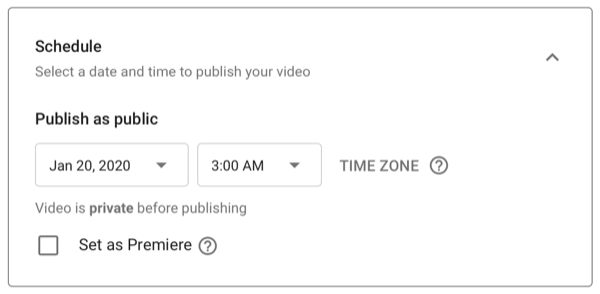
YouTube Metrics That Matter Most
Click-Through Rate
Marketers know that if you don't get the click, you can't get anything else. It's why you take so much time writing an email subject headline. If people don't open the email, they'll never read the copy and take action on what's inside. On YouTube, that click-through rate (CTR) matters so much. For the first time, YouTube Studio now tells you the average CTR on your channel, as well as the click-through rate of each video.
What influences CTR? The thumbnail is certainly a very big deal. The title is as well; you want to write your titles as headlines. They need to be interesting and make someone want to click. But one of the things not enough people focus on is the topic itself. Never upload a video that your subscribers didn't subscribe for. You can have the best thumbnail in the world but if it's the wrong topic for your audience, they won't be interested or click through on it.
Sean's channel has talked a lot about the Canon M50 camera. If Sean puts up a mediocre thumbnail but the title is something about the Canon M50, that CTR is accelerated, especially initially, because he's talking about the right topic. So when it comes to CTR, it's about those three factors: thumbnail, title, and topic.
Talking about a trending topic can also help you. Sean uses the Tesla cyber truck as a great example. A lot of smart YouTube creators from different backgrounds and types of channels were talking about the truck, putting it in their thumbnail, and leveraging it as a trending topic on YouTube. There was so much interest in it. People clicked on videos about the cyber truck from different points of view because it was the right topic at the right time with the right title and thumbnail.
You can change your description, tags, title, or thumbnail at any time, and it won't affect Google re-indexing the video for search. Experts have traditionally advised that changing your title would mess with search indexing but this hasn't been the case in Sean's experience.
He took one word out of the title of a video that he'd uploaded the morning we recorded. The original title was, “How to Make More Money on YouTube Without Burning Out–7 Tips” and he changed it to “How to Make Money on YouTube Without Burning Out–7 Tips,” along with a thumbnail change. He realized a lot of people might not be making any money on YouTube yet, thus the messaging of “more” could be unattainable.
He watched as the video's rankings changed before his eyes due to a combination of changing the title and thumbnail and resharing it.

This is another advantage to pre-seeding those videos to some of his earliest-rising viewers. By seeing what is and isn't working before most of his viewership is even awake, Sean can make those tweaks and have it impact the rest of his views as those first 24 hours continue to roll out.
View Velocity
YouTube cares a lot about view velocity. How fast is your video getting views once you make the video public? This is influenced by your subscribers, external traffic, interest, and people clicking on your content. If you upload your video at the peak of when your own audience is on the platform and it's going down, that's going to affect your view velocity.
Simply uploading that video at a more strategic time of day could determine the long-term destiny of that video being watched and ranked. It could also potentially generate new viewership for your channel for weeks, months, and years to come. So this is definitely an important metric to pay attention to.
If you have a newsletter, send out a link the same day the video is published for the best velocity. The first 24 hours is the view velocity's most important time. Sean says the first 3 hours are the most crucial. With YouTube subscribers, it's not like email, where everybody's going to get a notification just because they're a subscriber. Not every video will be shown to all of your subscribers because there's an algorithm at play and it's sampling your content to decide if it's worthy to show each video to the rest of your subscribers.
YouTube gives this feedback in layman's terms. On the home page, they rank your videos based on your last 10 uploads. It's constantly changing. In the first hour, your video can be number four out of your last 10, but after about 4 hours, it can move to be number six out of your last 10. This is the curve of view velocity and it's constantly giving you feedback.
Referring back to the video he uploaded the morning we recorded, Sean looked at the view velocity within the first few hours. It was scheduled for 3:00 AM when people were on. He then went into the beta of YouTube Studio's analytics interface, inside YouTube, to check out his view velocity.
The video wasn't doing very well; it was nine or 10 on the list. He knew the video content was great but realized he had positioned it wrong, and that the thumbnail wasn't very good. You want the imaging on your thumbnail to be clear and distinct and to really pop.
Both Sean and his interviewee had brown hair and they had dark bushes and trees behind them in the picture, so they were indistinct from the background. He tried to brighten it up as much as possible and changed the thumbnail a few hours after the video first went live. He reshared the video to try to get the views going again.
Sure enough, the video immediately saw a lift and grew to be number six out of his last 10 uploads. Sean knew from experience that this was how that video should perform.
Because that video had less subscriber interest and fewer clicks in the first few hours, the video had immediately felt the impact in distribution. The reverse is true when it's a no-miss video. If people don't skip past it in their subscription feed because the thumbnail, title, and topic are so interesting, not only will YouTube accelerate distribution to your subscribers but your video may be suggested and even put on the home page for people YouTube thinks would be interested in that content.
Average View Duration vs. Watch Time
Average view duration is the average of how long people continue watching a video. You want that to be as long as possible. YouTube will tell you the average view duration of each video and also show a channel average. If you can get over 50%, you're doing really well. If it's an 8-minute video, a 50% average retention would mean that most people stick with the video for 4 minutes.
Watch time is how much total time people spend watching your videos overall. You can do a lot of things to “hack” watch time, like long live streams. Nick Nimmin, a great YouTube expert, will do 4-, 5-, 6-hour live streams and this has helped him grow his channel's watch time.
vidIQ's channel has done lots of super-long live streams around subscriber battles between PewDiePie and T-Series. They can get hundreds and thousands of minutes of watch time even if only a few people are watching. Those people are watching all day, or they're on and off.
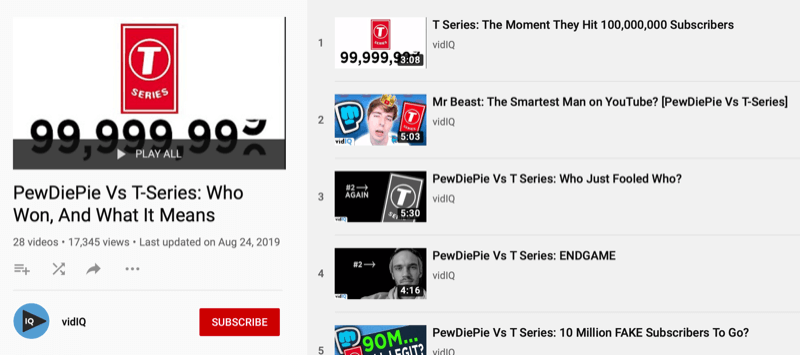
Session Duration
YouTube wants people on the platform so they're interested in longer-form content or sequences of shorter-form content. This way, the average session duration—or total amount of time that people are staying on the platform per viewing session—is longer.
YouTube has given us a variety of statistics about how many people use the platform every day and how many hours of video are being consumed, so you can do simple math and come up with an average session duration. Overall, people are spending substantial amounts of time on the platform, unlike Twitter, for instance, where they're on and off in seconds.
The average mobile session on YouTube lasts more than 40 minutes. Some people are spending up to an hour a day on the platform, some just 2 or 3 minutes. These stats vary so widely because it depends on the person and the content. There are certainly much longer sessions, especially as you get into younger demographics that are gaming and streaming.
Sean is in the tech industry so he has a tech channel talking about cameras and helping people with lighting. What he's learned is that a consumer looking for a product doesn't just watch his videos or somebody else's. They're watching videos from many different points of view, especially if they're about to spend $1,000 on a camera or $2,000 on a laptop.
For decisions like that, there are clusters of viewing behavior. And that's what YouTube loves because it means people are spending time on the platform.
Key Takeaways From This Episode:
- Find out more about Sean on his website.
- Follow Sean on Twitter, Instagram, and LinkedIn.
- Follow Sean's YouTube channels: Video Influencers, Think Media, Think Marketing, and Sean Cannell.
- Listen to The Think Marketing Podcast.
- Watch Sean's episode of Video Influencers With Michael Stelzner.
- Read Robert Cialdini's Pre-Suasion.
- Watch Brian Tracy, Phillip DeFranco, and Matt Gielan of Little Monster Media Co. on YouTube.
- Check out your YouTube data with vidIQ.
- Check out Social Media Marketing World 2020.
- Watch exclusive content and original videos from Social Media Examiner on YouTube.
- Watch our weekly Social Media Marketing Talk Show on Fridays at 10 AM Pacific on Crowdcast.
Help Us Spread the Word! Please let your Twitter followers know about this podcast. Simply click here now to post a tweet.
If you enjoyed this episode of the Social Media Marketing podcast, please head over to iTunes, leave a rating, write a review, and subscribe. And if you listen on Stitcher, please click here to rate and review this show.
What do you think? Will you make any changes to your marketing based on these YouTube trends? Please share your comments below.
Attention Agency Owners, Brand Marketers, and Consultants

Introducing the Marketing Agency Show–our newest podcast designed to explore the struggles of agency marketers.
Join show host and agency owner, Brooke Sellas, as she interviews agency marketers and digs deep into their biggest challenges. Explore topics like navigating rough economic times, leveraging AI, service diversification, client acquisition, and much more.
Just pull up your favorite podcast app, search for Marketing Agency Show and start listening. Or click the button below for more information.

